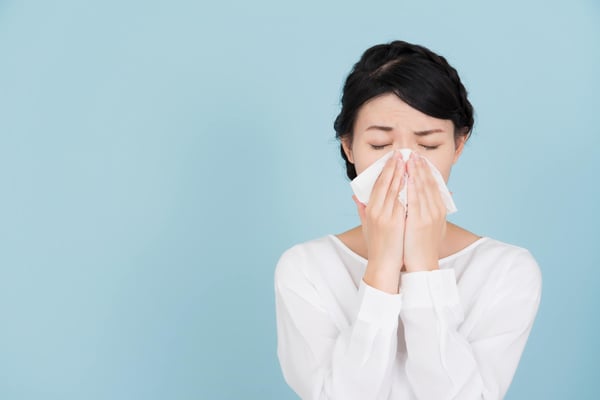
It may still be frigid in your region of the country, but warmer weather is on the way, and soon frozen ground will give way to daffodils and crocuses. Families across the country are already planning spring vacations. Those vacations bring new experiences, new foods, and new exposure to allergens. For some people, these new allergen exposures can trigger a potentially lethal anaphylactic reaction. Now is the time to brush up on allergy management skills so your team can be prepared.
Here are five fast facts you need to know about allergies.
The Most Common Allergens
Any substance can trigger an allergic reaction because an allergic reaction is merely an abnormal immune response. Some substances are more likely to cause allergic reactions than others. The most common allergens include:
-
Peanuts and tree nuts
-
Cow’s milk
-
Eggs
-
Wheat
-
Soy
-
Fish
-
Insect bites and stings
Shellfish is also among the most common allergens, and the most common cause of adult-onset allergies. Sixty percent of people experience their first shellfish allergic reaction as adults.
Early Warning Signs of Anaphylaxis
Allergies exist on a continuum, ranging from minor to life-threatening. Allergic reactions can also change with time, such that a person who previously had only a minor allergic reaction subsequently experiences life-threatening anaphylaxis. The early warning signs of anaphylaxis include:
-
Low blood pressure or changes in pulse
-
Skin flushing or hives
-
Nausea and vomiting
-
A vague, unexplained sense of dread
Difficulty breathing and other serious complications typically appear within 30 minutes of exposure to an allergen. Secondary anaphylaxis can happen hours after an initial anaphylactic reaction. This is called a biphasic anaphylactic reaction.
Allergy Prevention and Management
Research suggests that early exposure to some allergens, particularly peanuts and eggs, may reduce the risk of allergies. Given the dangers allergies pose, consider educating the community you serve about other allergy prevention strategies. Those include:
-
Exclusive breastfeeding for the first six months of an infant’s life
-
Avoiding excessive use of sanitizers
-
Early exposure to dogs and cats
-
Reducing exposure to dust mites
-
Avoiding exposure to tobacco smoke
Children with specific allergy risk factors, such as eczema or egg allergies, may benefit from very early exposure to common allergens or from immunotherapy. Advise parents to seek an early consultation with an allergist.
Risk Factors for Anaphylaxis
The two biggest risk factors for anaphylaxis are allergies and a previous anaphylactic reaction. People with asthma, eczema, or a family history of allergies may be more vulnerable, though the specific mechanisms through which these factors mediate risk is unclear. First responders should assume that anyone showing symptoms of anaphylaxis may be experiencing an allergic reaction and should proceed accordingly.
Airway Management for Anaphylaxis
Rapid airway management is critical in the treatment of anaphylaxis. Between 63 and 93 people die of anaphylaxis each year—many while receiving medical care. Clearing the airway and providing oxygen can help stabilize the patient for transport and greatly lower the risk of death. Along with airway management, patients usually need treatment with epinephrine and IV fluids.
In children especially, even a few minutes of hypoxia can cause serious damage, so it’s important to have a suction machine that you can transport directly to the patient. Don’t waste precious time attempting to move a patient in respiratory distress caused by anaphylaxis.
Portable emergency suction machines must not trade effectiveness for convenience. Likewise, they should be compatible with the attachments you already have on hand and should be safe to use with all patients, including neonates and geriatrics. To ensure optimal use, store all attachments with the device, and place an extra battery in the bag.
For help selecting the right suction machine for your agency, download our free guide, The Ultimate Guide to Purchasing a Portable Emergency Suction Device.















